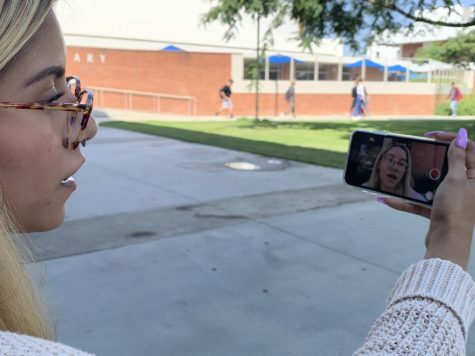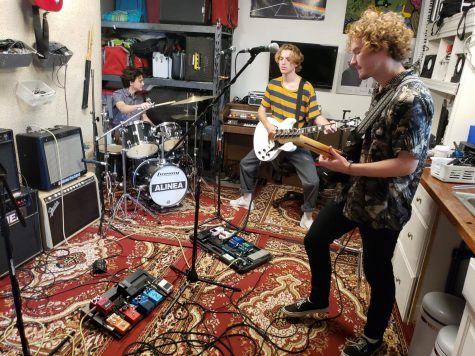Los Angeles artist makes a revolutionary connection between art and nature
He appeared to be standing next to a group of close friends as they watched the video play on an unusually fragmented screen, that showed images of a monarch butterfly landing on lush green foliage, followed by more images of a familiar world moving on a continual cycle.
As he mingled through the gallery, James Griffith could easily be recognized by his popularity among friends and fans who appeared to be as equally attracted to him as the butterfly was to the foliage.
Los Angeles artist, James Griffith, reveals through his use of natural elements as his primary medium, the implicit connections between art and nature in his portrayal of Darwin’s Theory of Natural Selection.
“This is about Darwin coming to the scene. Revolution is about how man was center stage and then Darwin put it into a perspective where people and animals where equals,” Susanna Meiers, art gallery director said. “The revolution is that people didn’t think of that as a possibility. James is talking about his own take on the theory of evolution intuitively, combined with his own sense of it too.”
Griffith said that he used to do more traditional work and worked with oils, but 5 years ago, he had given that up.
“Now I use tar, pollen, and ash. It’s more physical and attached to meaning. Tar is primordial goo,” Griffith said. “It’s from La Brea Tar Pits. It is more primordial than ultramarine blue from Blick Art Store.”
The idea, Griffith said, is of painting and nature, and that it is a timeline about nature. Darwin was highly into the idea that nature is self-perpetuating and that he is trying to paint those ideas, to convey that poetically. Before Darwin, nature was this thing that popped out, and after that, we were done. But nature is always changing and the work suggests the fluidity of nature.
Lei Ann Grace, 19, childhood education major, was very intrigued by Griffith’s work and thinks that he is “trying to open up our senses.”
“The ears surrounding that painting are sea shells with ears painted into them,” Grace said. “I think art can educate people, really just by not talking.”
Griffith began working on this project one year ago. He worked with abstract imagery before doing this and had also done large scale paintings.
“It’s different for each artist,” Meiers said. “He started one year ago for the show, which is phenomenal. Artists don’t usually do this much for a particular show. He produced it.”
Griffith’s hard work was just something small he put together but it will continually grow from here.
“Doing the work was a transformational experience. Making this show took a lot of time. I started it a year ago, and I’m a different person now,” Griffith said. “I only scratched the surface. This is something that I’m going to be working with for the rest of my life.”






